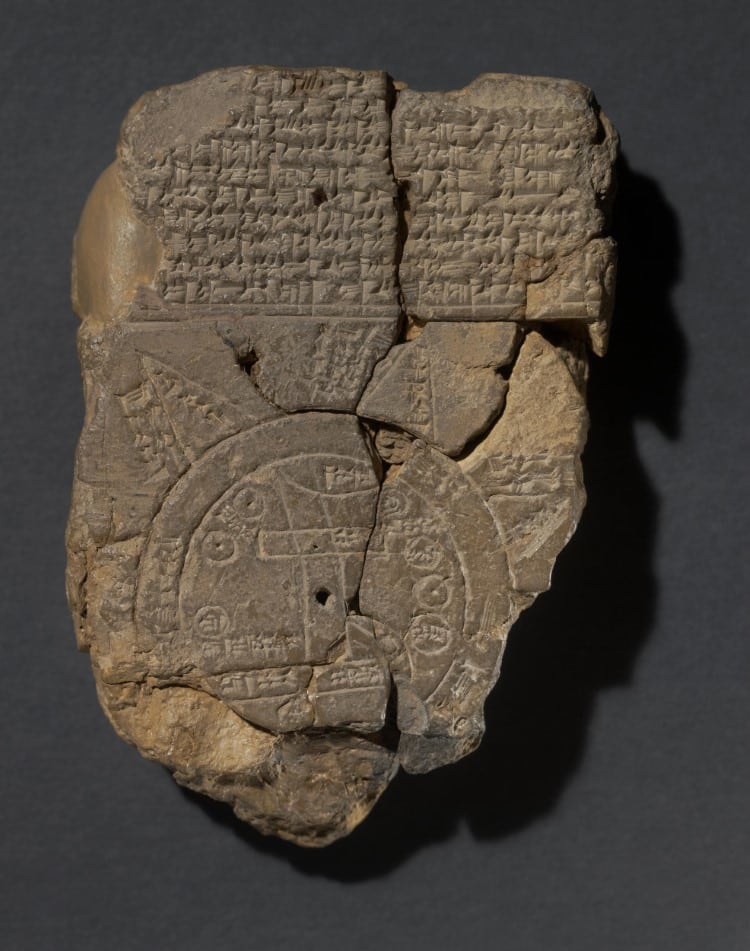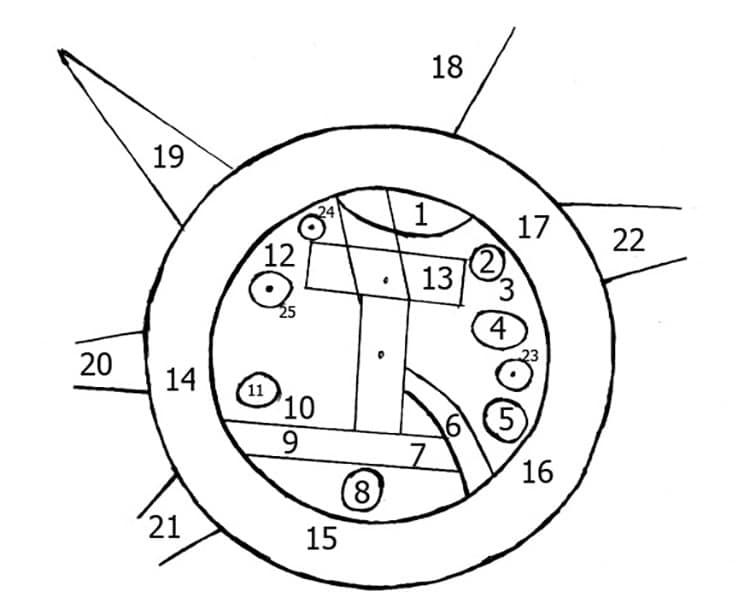For example, the ancientHereford Mappa Mundiwas drawn in 1300 and depicts the world through a medieval Biblical lens.
Or there is a surprisingly accurate crowd-sourced world map created by a Venetian monk in the 15th century.
There are also the 12th-centuryrenditions of Muhammad al-Idrisi, an intrepid scholar and traveler.

Photo:© The Trustees of the British Museum,CC BY-SA 4.0
But the oldest map of the known world was not made on vellum or in Europe.
The British Museum acquired it in 1882, and it is still part of the museum’s collection.
It features text in cuneiform script, as well as a sun-shaped drawing with mysterious incisions.

A schematic of the map, showing for example at 7 a swamp, at 2 a city, and at 1 a mountain. (Photo:Wikimedia Commons, Public Domain)
Part of the drawing has broken away over time.
Babylon is number 13, right below a tall mountain.
According to the accompanying text, mystical beasts frolic across this known world.
Sea serpents, winged horses, and bull-man hybrids are noted.
Panthers, deer, monkeys, and wolves also roam.